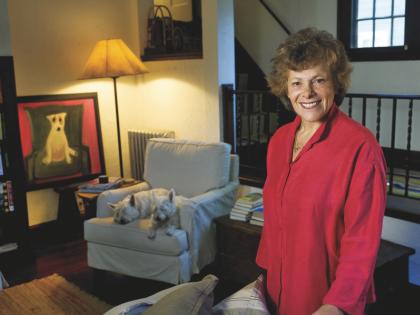In the public pantheon of landscape-makers, Michael Van Valkenburgh isn’t quite in the Frederick Law Olmsted, A.M. 1864, LL.D. ’93, tier yet—it’s hard to compete with New York’s Central Park. But the operative word is yet, given the significance and success of his work along the Brooklyn waterfront (described in “The Urban Landscaper,” November-December 2013, page 32). Now, in a lush viewbook of a sort Olmsted could not have imagined—Brooklyn Bridge Park (Monacelli, $60)—the Eliot professor in practice of landscape architecture emeritus, colleagues, and others celebrate what great works can be accomplished in great cities. From Van Valkenburgh’s introductory essay:
This book tells the story of the planning and design of 85 acres of public space reclaimed from a defunct commercial waterfront on the East River. Each section recounts the challenges, insights, and innovations concerning a key element of the project….Improved access and newly designed urban connections to the waterfront bring the energy of the city into the formerly isolated site. Massive constructed topography offers, in equal measure, tranquil spaces and dramatic vistas. Abundant plantings, from grove to meadow, strive to be big-hearted and ecologically high performing. A re-engineered water’s edge honors the dynamism of the tidal East River.…
In 1999…Matt Urbanski [M.L.A. ’89] and I took a long walk with Elizabeth Barlow Rogers [who organized the Central Park Conservancy] in Central Park.…Betsy told us, “If you are going to design a park in New York City, you’re going to have to learn how to bend.” Before long, everyone on our team came to understand what she meant. Bending isn’t giving in to the naysayers or compromising your ideals. Instead it is a form of empathy, the ability to adapt to the needs and desires of stakeholders at least as much as you would expect them to embrace your ideas. It also means letting the form and function of a landscape emerge organically from the site rather than imposing preconceived ideas on them. Bending requires the humility and determination to create something richer and more authentic than anything that could spring from your imagination alone.…
From the beginning, our highest ambition was for the park to be a democratic landscape. Public in more than just the legal sense of the word, it would be as responsive as possible to the needs and desires of the people who use it, not just by providing amenities but by being relaxed enough for people to bring their whole selves there. We hope what follows will shed light on how one park was designed to be democratic at its core…a living, everyday landscape—one that is best measured in basketball games, summer cookouts, and late-night strolls with a restless newborn.








